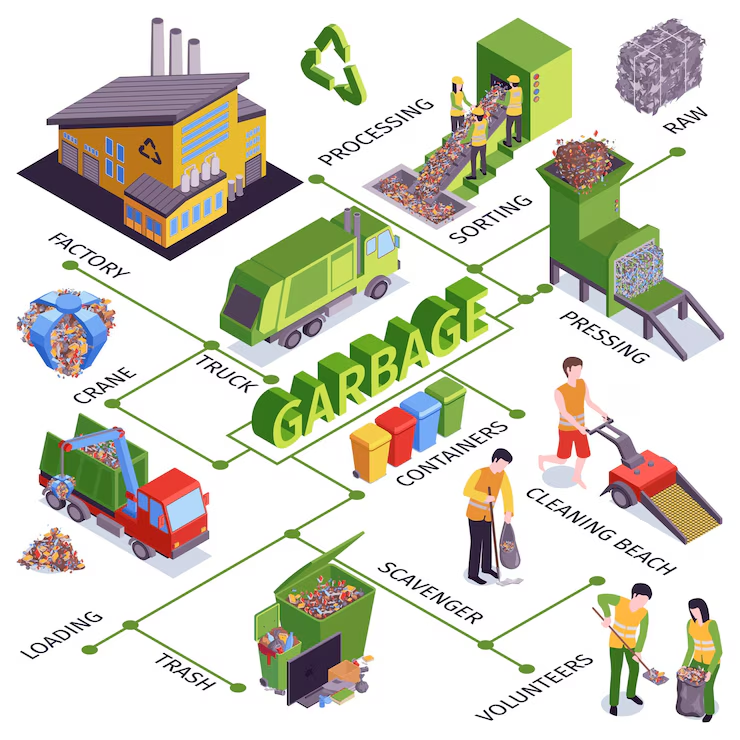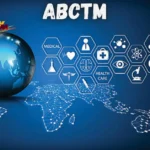Waste management lies at the heart of environmental protection, resource conservation, and public health. As populations swell and consumption soars, the volume of trash we generate skyrockets. Effective waste management systems turn potential pollution into valuable resources, safeguard communities, and pave the way to a circular economy. In this article, you will discover the principles, methods, challenges, and future trends in waste management—and learn how you can contribute to a cleaner world.
Understanding Waste Management
Waste management encompasses all activities and processes involved in handling refuse—from generation and separation through collection, transport, treatment, and final disposal. It applies to a wide range of materials, including:
-
Household refuse (food scraps, packaging, paper)
-
Industrial by-products (chemicals, metals, scrap)
-
Construction debris (wood, concrete, metals)
-
Hazardous substances (batteries, medical waste, solvents)
-
Electronic discards (computers, smartphones, appliances)
By designing systems that minimize, repurpose, and safely eliminate waste, societies can reduce environmental impact and recover valuable materials.
Why Waste Management Matters
Protecting Human Health
Improper disposal can contaminate water, soil, and air, leading to disease outbreaks and respiratory issues. Robust waste management prevents hazardous exposure and curbs vector-borne illnesses by eliminating breeding grounds for pests.
Conserving Natural Resources
Recycling and recovery processes reclaim metals, paper fibers, and organic matter, reducing the need to extract virgin resources. This conserves forests, minerals, and fossil fuels while cutting greenhouse gas emissions.
Reducing Environmental Pollution
Landfills produce methane—a potent greenhouse gas—and can leach toxins into groundwater. Advanced waste management techniques, including controlled landfilling and waste-to-energy conversion, dramatically lower these risks.
Driving Economic Benefits
The waste sector creates jobs in collection, sorting, recycling facilities, composting sites, and research. Recovering materials generates revenue and reduces raw-material costs for manufacturers.
Core Methods in Waste Management
1. Source Reduction and Reuse
Preventing waste at its origin is the most effective strategy. This includes designing products with fewer materials, using refillable containers, and encouraging consumers to repair rather than replace goods.
Subheading: Designing for Durability
Manufacturers can adopt modular designs that allow easy repair, extending product lifespans and cutting down on discarded items.
2. Recycling and Material Recovery
Once waste is generated, recycling facilities sort materials—paper, plastics, metals, glass—and process them into raw inputs for new products.
Subheading: Advanced Sorting Technologies
Optical sorters, AI-powered robots, and magnetic separators improve purity and efficiency in recycling streams.
3. Composting Organic Waste
Organic waste—food scraps, yard trimmings, agricultural residues—can be aerobically decomposed into nutrient-rich compost. This closes the loop by returning carbon and minerals to the soil.
Subheading: Community Composting Programs
Local initiatives allow households to drop off organic waste or receive curbside pickup, reducing landfill loads and creating soil amendments for urban gardens.
4. Waste-to-Energy (WtE) Conversion
Thermal, biochemical, and mechanical processes convert residual waste into electricity, heat, or biofuels. WtE plants reduce landfill volume and harness energy from materials that cannot be recycled.
5. Secure Landfilling
Modern landfills incorporate liners, leachate collection systems, and gas capture technologies to prevent soil and water contamination, while capturing methane for energy use.
Challenges Facing Waste Management
-
Infrastructure Gaps
Many regions lack basic collection services, forcing informal dumping and open burning. -
Public Awareness
Without clear guidance on segregation and recycling, valuable materials end up in landfills. -
Financial Constraints
Advanced treatment facilities require significant investment and skilled personnel. -
Regulatory Enforcement
Weak policies and limited inspections can lead to illegal dumping and environmental harm.
Innovations Shaping the Future
-
Smart Bins & IoT Monitoring: Sensors track fill levels, optimize collection routes, and reduce fuel consumption.
-
Chemical Recycling: Breaks down plastics into monomers for producing virgin-quality polymers.
-
Blockchain Traceability: Ensures transparent tracking of waste streams, reducing fraud in carbon and recycling credits.
-
Biodegradable Materials: New bioplastics and packaging that decompose under natural conditions, easing disposal burdens.
Role of Policy and Community
Strengthening Regulations
Governments must set ambitious recycling targets, ban harmful single-use items, and incentivize eco-friendly product design.
Engaging Citizens
Education campaigns, school programs, and neighborhood clean-ups foster a culture of responsibility. When individuals understand how waste management benefits them directly—through cleaner streets and lower health risks—they become active participants.
Practical Tips for Individuals
-
Reduce Consumption: Choose bulk purchases, avoid disposable items, and favor minimal packaging.
-
Sort at Source: Separate recyclables, organics, and hazardous waste according to local guidelines.
-
Reuse Creatively: Turn jars into storage containers, repurpose old textiles, or donate items in good condition.
-
Support Green Businesses: Buy from companies with transparent waste reduction and recycling programs.
-
Compost at Home: Even a small countertop bin can divert significant organic waste from landfills.
Conclusion
Effective waste management is a shared journey requiring innovation, policy support, and individual action. By prioritizing reduction, embracing recycling technologies, and fostering community engagement, we can transform waste from a mounting problem into a source of value. Together, let’s commit to smart waste practices that protect our planet, bolster economies, and secure a healthier future for generations to come.






